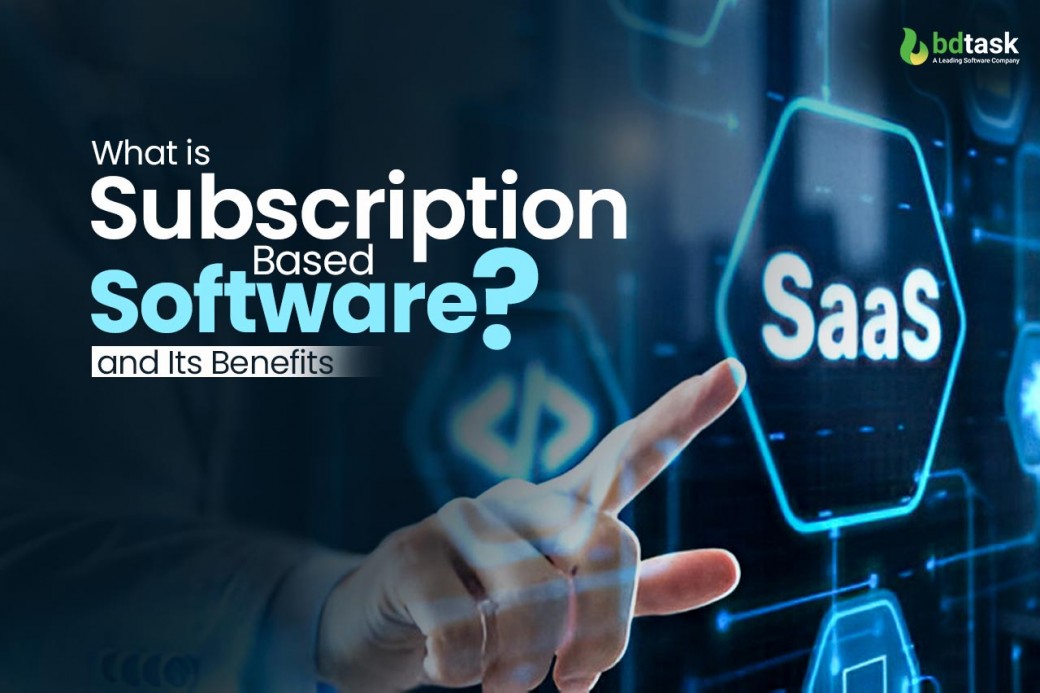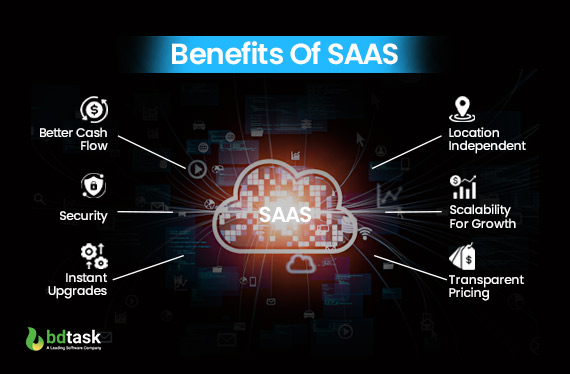What is Subscription Based Software and Its Benefits

Revolutionary changes have been made in the software industry in the past few years. Previous software selling systems were different, but with the help of advanced technology and tools, software selling has turned into a subscription based option instead of a one-time purchase. Recently, almost every business industry has used cloud-based license software. Here, we will explore what is subscription based software in detail so that you can implement the best method to avoid risk and dominate the market.
What is Subscription Based Software
Subscription-based software is a software licensing process where the customers or users pay a certain amount of money on a monthly or annual basis, and get access to the software.
In the past, customers had to pay one time, and after providing payment, they got the software on a CD, a pen drive, or a download link. Then, the customers had to install the software on their devices using the license key. After all the processes, they were able to use the software.
But now, most software business management companies follow the SaaS model. SaaS is a model that refers to software as a service. This SaaS model allows its users to connect any device over the internet using cloud-based methods.
In the subscription model, users can use the software for a certain period. After that time, users will have to pay again to use the software. However, if the users do not pay, they will not be able to use the software.
A subscription based software model does not allow lifetime access; users have to pay a recurring fee to renew the software subscription agreement so that they can use the software. One more important part of subscription-based software is that the user will get support and updates as long as they use the software.
Types Of Subscription Services Pricing Models
Subscription-based software has different types of software licensing model and different subscription software license pricing strategies. Software subscription costs depend on several factors, like how long the user wants to use them or how much they are going to pay.
Here, we will discuss the subscription pricing models.
1. Per-User Pricing Model
The per-user pricing model, a straightforward and widely used strategy, is based on the number of users using the software. Its simplicity makes it easy to understand and apply. Let's explain in detail.
Suppose you purchase software, and the price is set at about $15 per user.
Let's consider your company has 50 employees. However, the software can only be used by 20 employees, and 30 employees do not need to use it.
So, if you want to purchase the software for the 20 people using it, the overall charge will be 20* $15 = $300. It applies for a certain amount of time and depends on the company policy.
2. Flat-Rate Model
The flat rate pricing model is a beautiful and easy software subscription license model. It is a direct model in which users pay a fixed amount of money and use the services or products for unlimited use.
One of the key advantages of the flat rate pricing model is its affordability, offering unlimited use at a reasonable price.
The flat-rate model is similar to a buffet restaurant, where customers can eat unlimited foods for a certain amount of money in a limited period. The flat-rate model can only be profitable or ideal for some businesses. Still, many businesses have been successful in using it.
3. Tiered Pricing Model
A tiered pricing model is a subscription model in which the user can select a package of features at a high price. It is like a set menu in restaurants. In a tiered model, companies have divided their products into tiers, combining different features at different prices.
Each tier in the model is designed with specific criteria, making it applicable to different business markets. Most companies adopt the tiered model to ensure they can serve their customers according to their unique needs, making it a customer-centric strategy.
The Tier model is also applicable to small businesses management because they need some basic features to function and customization. It is a business model that can be tailored to every business and can maximize the customer base.
4. Volume Based Model
A volume or usage-based pricing model is known as a metered pricing model. This model charges the amount of money based on the consumer. It works as a pay-as-you-go service.
The volume-based pricing model is flexible for customers and software providers. It is mainly used in telecommunication, cloud computing, and other utility sectors.
One of the most beneficial parts of this pricing model is that if the business companies do not use the services according to their expectation, they can pay less next time.
5. Freemium Model
A freemium pricing model is a basic combination of premium and free offers that most of the software subscribers use. It allows the consumer to use the premium version of any service along with extra features. Freemium helps businesses build customer awareness, engagement, and loyalty.
It allows a large user base to upsell premium features to users so that they can pay the enhanced value. The freemium model is designed to showcase the product's potential. Customers can add extra features or services or upgrade the premium subscription in the freemium model.
A freemium pricing model is a good marketing strategy as they spend a handsome amount of money in software development. It helps a lot to build brand awareness. Sometimes, freemium models work better than a free trial period. This pricing model is very popular and very successful in the business industries.
Benefits Of Using Subscription-Based Software Pricing Model

You may ask why is everything subscription based. The software subscription model is now the most prominent way of pricing software services. Different statistics show that in the last fifteen years, most custom software companies have shifted their pricing model to the SaaS model, which is highly beneficial.
Here, we will discuss the benefits of using the subscription-based software pricing model.
-
Location Independent
A cloud-based SaaS model allows users to access software applications from any device and any location. Subscription solutions are very helpful for business owners who frequently visit different places for business purposes.
It allows the business owner to manage the entire business from anywhere. Most importantly, the subscription model became more popular during the COVID-19 pandemic. Nowadays, most companies or businesses use subscription solutions to control their business remotely.
-
Scalability For Growth
Your business investment is not a one-time investment; it is a lifelong investment. And your business always tends to grow. Subscription-based business models have the maximum flexibility for business growth.
For example, when you start your business, you just focus on some specific products or services, but your business is going to start growing very fast. Then, you need the ability to meet your business needs as your business grows.
If you use a cloud software licensing business model, you can quickly scale up your business according to your needs. It allows you to work with different types of services and pricing tiers smoothly.
-
Transparent Pricing
One of the most significant advantages of a subscription-based business model is multiple payment gateways and pricing transparency. Numerous payment gateways allow users to use different pricing methods, such as debit cards, credit cards, PayPal, checks, lockboxes, etc.
On the other hand, pricing transparency allows for an easy way to check the price list for products or services with just a few clicks. Through the transparent pricing plan, the consumer can quickly determine how much they have to pay for the services.
-
Better Cash Flow
Subscription models facilitate recurring payments and provide automatic recurring payment options, ensuring better cash flow management and reducing late fees. The subscription model maximizes customer engagement and reduces late fees, creating smoother and better business growth.
-
Security
As we know, nowadays, most businesses are cloud-based. Therefore, it is very important to focus on your business security. In terms of security, no other model can beat the subscription-based software model.
Subscription-based software can smartly release different patches to fix threads or malware and repair them quickly. So, subscription-based is the best way to secure your data and business.
-
Instant Upgrades
Technology is constantly upgrading, so it's essential to cope with it and keep your businesses updated. In terms of instant upgrades, SaaS subscription software is super fast.
It automatically adds new updates or extra features to your software when the company adds new updates or features. These updates or features are generally installed in your software the next time you open it.
How to Set Up a Subscription Model
Starting a subscription model in your business requires some basic steps. As a business owner or a company, you can add the subscription model to your existing business or start a new subscription business model. For these you must have to choose a software development company for build a subscription based website or setup a subscription service.
So, follow those easy steps to get started with a subscription-based software business.
-
Choose Your Niche
Building a solid customer base is mandatory for any business. The better you can identify your potential customers, the more success you will have. So, before starting a subscription-based business model, you have to select your niche so that you can smoothly meet your customers' needs.
-
Select Your Product or Services
After choosing the niche, your next step is to choose the products or services that you want to include in the subscription business model. Now is the time to reach out to your products and partner with other businesses so that you can make a business deal for further progress. At this point, you can offer a demo or sample subscription so that consumers can get an idea about your products.
-
Craft a Compelling Value Proposition
As we know, the business market is highly competitive. Consumers will find thousands of other products similar to yours. So, you have to craft a compelling value proposition for your products, and it should be very clear. For example, why should you subscribe to your products? What problems can your products solve? What technology do you use? Etc.
-
Price Your Subscription Options
When your product is selected, you must set the pricing of your subscription services. Pricing is crucial for any business's success. So, while setting the prices, follow a satisfactory margin level, and you may also add different types of offers.
-
Choose The Right Tools And Platforms
Choosing the right tools and platforms is essential to your subscription service. So, you must research and find tools and services that suit your products or services.
-
Market Your Business
Once your product is ready to sell in the business market, it is time to showcase it in front of the targeted customers. This is a key to business success, so your subscription-based services are not out of the rules. Here are several ways to reach out to the targeted customers, such as using social media platforms, audio or video marketing, email marketing, different types of events, and many others.
-
Deliver Excellent Customer Services
Excellent customer service is the backbone of any business especially in the ecommerce business. So, you must ensure that your software subscription management provides superfast customer service. It should start from the first interaction to shipment and continue as long as the customers use the products.
Final Thought
Subscription ideas for business are one of the most promising business ideas. Although it also has some disadvantages, subscription-based software is easier to use than the previous model. It is a model that ensures companies scale up their revenue and maximize the customer experience. In conclusion, if any business owner or company can successfully implement the subscription-based software licensing process, they are more likely to grow the revenue.









